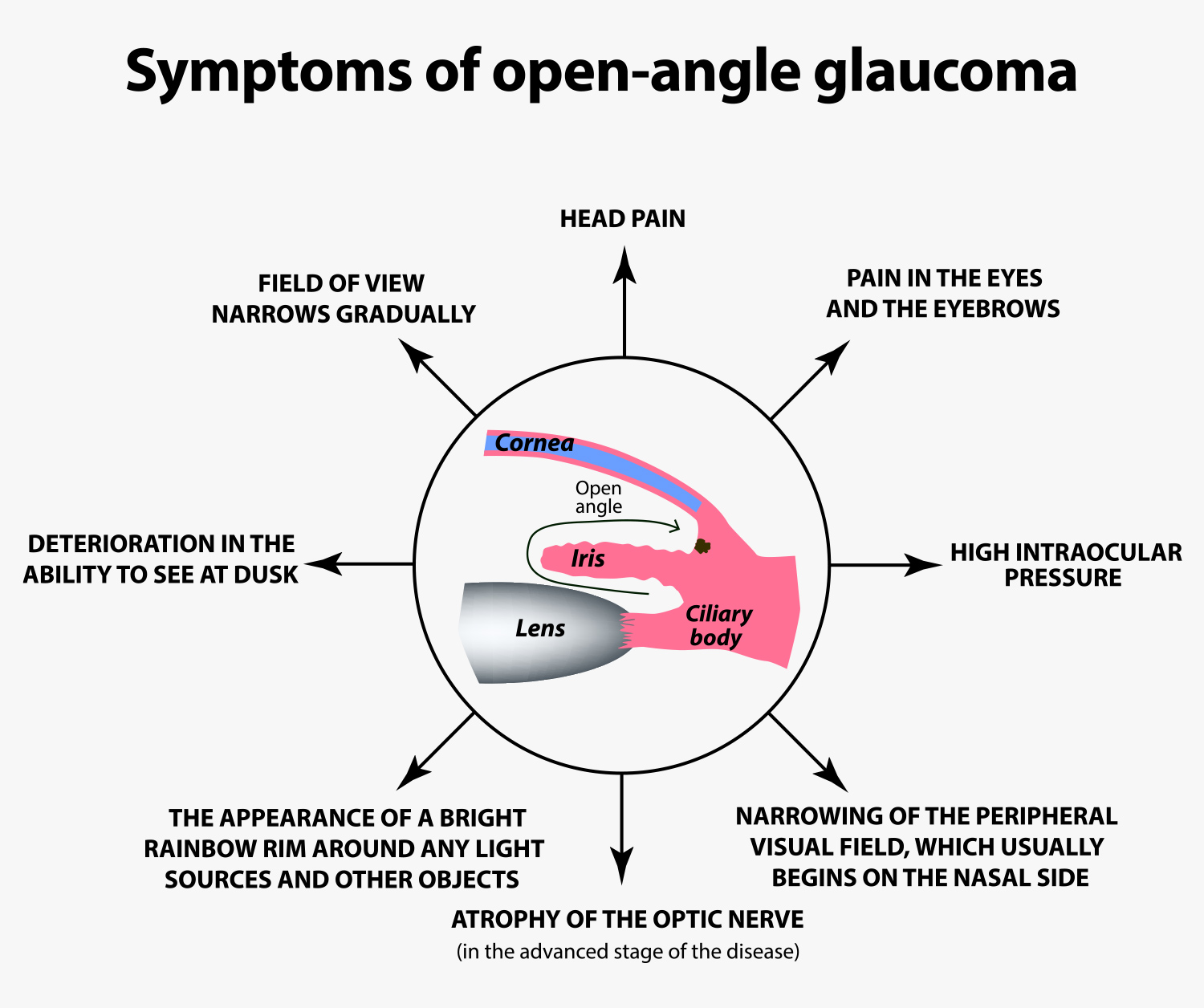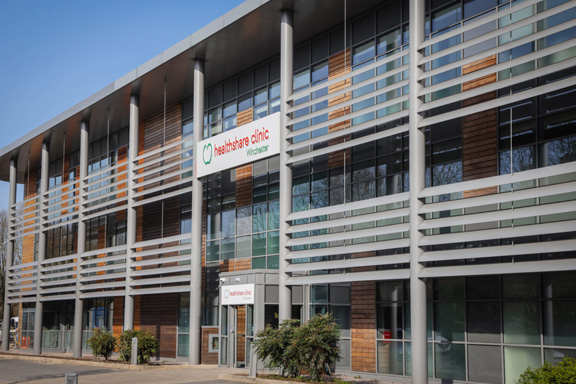Open Angle Glaucoma
Glaucoma is the name given to an eye condition in which the optic nerve becomes damaged. This leads to a loss in peripheral vision that is characteristic of glaucoma. Generally speaking this leads to a tunnel vision effect, although the actual progression is a little more random with an uneven pattern of blind spots. Glaucoma becomes more common with age, although occasionally it may occur in children and young adults. The majority of Glaucoma is chronic and progressive, some types (discussed in the section – Acute Angle Closure Glaucoma), can be rapid and can threaten sight very quickly.

Primary Open Angle Glaucoma
The most common form of glaucoma - primary open angle glaucoma (POAG) which is also known as chronic open angle glaucoma, chronic meaning long lasting or continuous – affects millions of people and is one of the commonest causes of registered blindness in the UK.
POAG gives no warning symptoms in its early stages. There is no pain and in many cases a person with this condition is completely unaware of the damage that is being done to their field of vision. This is because the characteristic damage occurs in the off-centre parts of the vision. Both eyes work together and one eye ‘fills in’ for the other, so that blank patches are not noticed.
The damage is often - but not always - caused by too much pressure within the eye (the intraocular pressure or IOP). The reason for the rise in pressure is usually due to the drainage of fluid out of the eye isn’t working as well as it should.
The increased pressure damages the optic nerve, by reducing the amount of blood that can get through the tiny blood vessels that supply the nerve and by pressing on the nerve itself. Glaucoma is a complicated disease, IOP is a risk factor but other risk factors such as age, family history, and anatomic eye factors may play a part. The definition of what constitutes high pressure is an ongoing debate, some people may develop glaucoma without a ‘normal’ IOP.
FAQs
Everyone should have regular eye check-ups, this can be done here at the Hampshire Eye Clinic or your local Optician practice. A range of tests in order to investigate whether there is evidence of Glaucoma and any damage to the optic nerve are carried out. These will include an examination of the optic nerve, a check of the IOP and a visual field test to map out any blank patches in your vision. These are the three main tests for glaucoma, and they will be repeated to monitor the condition.
Other tests are needed to look at the drainage channels or ‘angle’ (gonioscopy) to check if it is open and thus to confirm whether the type of glaucoma is primary open angle glaucoma, and to measure the thickness of the cornea (front window of the eye) for an accurate measurement to be made of your IOP.
If POAG is not treated then the damaged areas of the field of vision will get bigger and eventually this will lead to patches of visual loss and even blindness which is unfortunately irreversible.
However, for someone diagnosed with early stages of POAG today, there is very little risk of losing useful vision providing you are monitored regularly and keep up with the management plan. If a diagnosis of POAG is made, you will be advised to attend regular hospital appointments which you should not miss.

Damage caused by glaucoma cannot be reversed, but we can usually prevent it getting worse or slow its progress so that you keep useful sight for longer. So early detection and effective treatment are vital if your vision is to be maintained.
At first POAG is treated with eye drops or gentle laser (Selective Laser Trabeculoplasty) to reduce the IOP. It is very important to use your eye drops every day according to the instructions; the drops do not cure glaucoma but do help to control it.
If you don’t use the drops, you won’t notice any change for quite some time, but every missed drop means a greater chance of a loss of vision later. If eye drops or laser treatment can’t control the IOP enough to stop the losses in your field of vision then surgery might be recommended.
Glaucoma is a lifelong condition – there is no cure, but treatment is very effective. Please be aware that all drugs carry a risk of side effects. You should refer to the patient information leaflet provided with your drops for further information.
Don’t forget that there is an important inherited risk for glaucoma. Make sure that you tell your close blood relatives that you have the condition so that they can be checked. If they are 40 or over and in the UK they will be entitled to a free eye health check with their Optician.
Quality care in a relaxing surrounding
Book an appointment to see Mr Nish Srikantha at the Candover clinic in Basingstoke, or the Healthshare Clinic in Winchester.
Both locations are modern purpose built private hospitals designed entirely for patient well-being and comfort. The Candover Clinic is a stand-alone unit located on the Basingstoke and North Hampshire Hospital. The Healthshare Clinic on the outskirts of Winchester boasts a purpose built ophthalmic outpatients department and operating theatre offering the latest diagnostic and treatment technologies.













